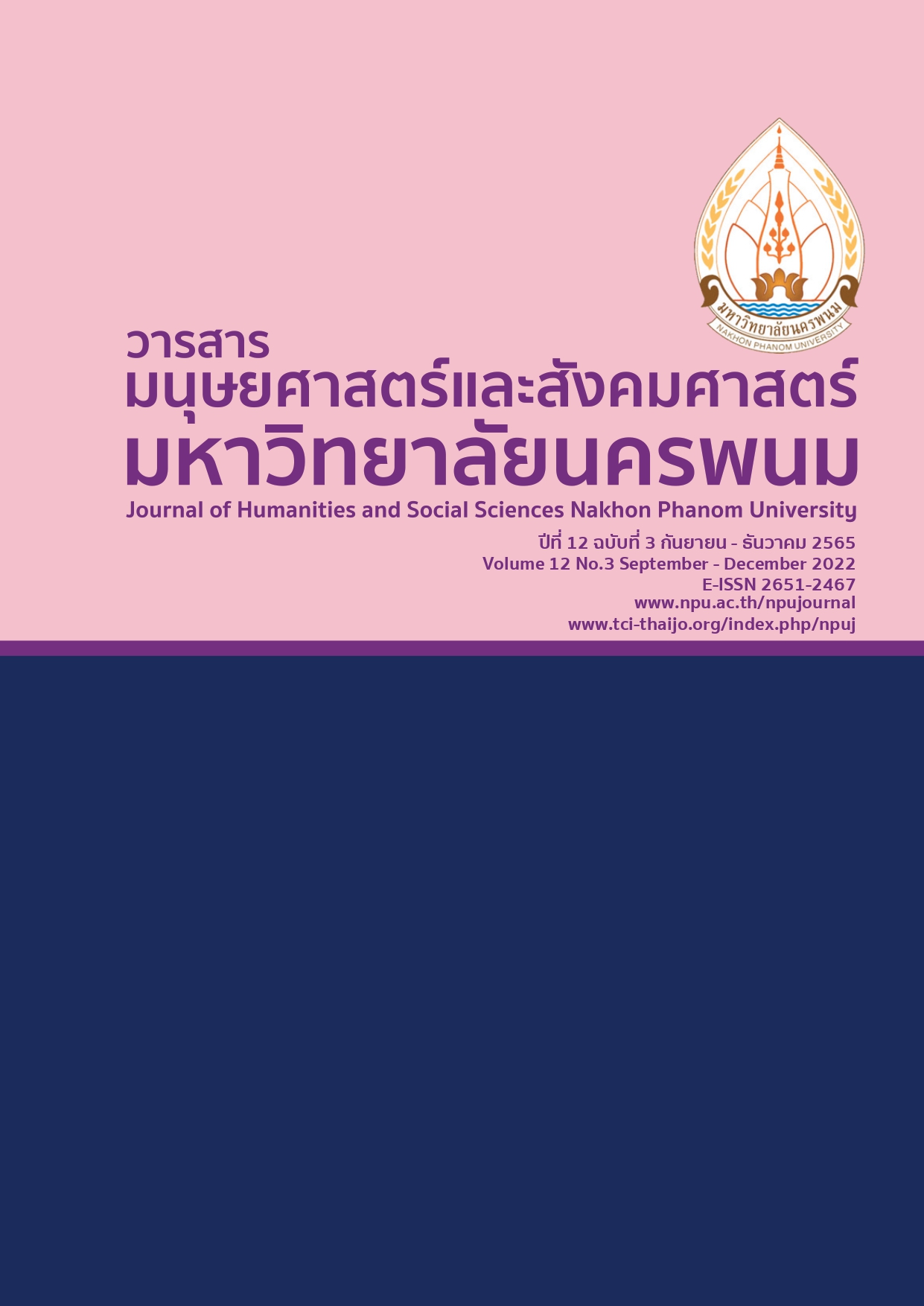Factors Affecting the Acceptance of Internet of Things (IoT) Technology for Residence
Main Article Content
Abstract
The purposes of this research were to determine factors affecting technology acceptance of Internet of Things (IoT) for Residence Conceptual framework was based on Theory Reason Action, Technology Acceptance Model, and Network Externality. Stratified random sampling technique was applied to select 636 samples by Bangkok Metropolis and Vicinity to answer self-reported questionnaire. Data were analyzed by Structure Equations Model (SEM). Research findings revealed that factors that significantly affected level of technology acceptance of Internet of Things (IoT) for Residence consisted of Perceived Compatibility, Perceived Enjoyment, Intention to Use, Perceived Connectedness, Perceived Ease of Use, Perceived Control, Perceived Value and Perceived Usefulness
Article Details

This work is licensed under a Creative Commons Attribution-NonCommercial-NoDerivatives 4.0 International License.
References
Ahmed, S. and Ibrahim, M, O,. A. E. (2019). Smart homes as an IoT application: predicting attitudes and behaviours. 2019 IEEE/ACS 16th International Conference on Computer Systems and Applications (AICCSA). 3-7 Nov. 2019. Abu Dhabi, United Arab Emirates, 1-7. doi:10.1109/AICCSA47632.2019. 9035295
Al-Debei, M. M. and Al-Lozi, E. (2014). Explaining and predicting the adoption intention of mobile data services: A value-based approach. Computers in Human Behavior. 35(2014),326–338. http://dx. doi.org/10.1016/j.chb.2014.03.011
Coughlan, T., Brown, M., Mortier, R., Houghton, R. J., Goulden, M. and Lawson, G. (2012). Exploring acceptance and consequences of the Internet of Things in the home. Proceedings-2012 IEEE International Conference on Green Computing and Communications. 20(23),148–155. http://doi:10.1109/Green Com. 2012.32
Chaweesuk, S. and Wongjarturapat, S. (2012). Thritsadī kānyō̜mrap kānchai theknōlōyī sārasonthēt [Information Technology Acceptance Theory]. KMITL Information Technology Journal. 12(1),1–21.
Childers, T. L., Carr, C. L., Peck, J. and Carson, S. (2001). Hedonic and utilitarian motivations for online retail shopping behavior. Journal of Retailing. 77(4),511–535. doi:10.1016/s0022-4359(01)00056-2
Davis, F. D. (1985). A technology acceptance model for empirically testing new end-user information systems: theory and results. Unpublished Ph.D. dissertation, MIT Sloan School of Management, Cambridge, MA.pp.1-219
Demiris, G., Hensel, B. K., Skubic, M. and Rantz, M. (2008). Senior residents’ perceived need of and preferences for “smart home” sensor technologies. International Journal of Technology Assessment in Health Care. 24(1),120–124. doi:10.1017/S0266462307080154
Davis, F. D., Bagozzi, R. P. and Warshaw, P. R. (1989). User acceptance of computer technology: A comparison of two theoretical models. Management science. 35(8),982-1003. doi;10.1287/mnsc.35.8.982 Source: RePEc.
Flew, A. (1988). Health promotion in nursing practice. International Journal of Nursing Studies. 25(2),159–162. http://doi:10.1017/s0265052500002739
Hee, w., Kim, H., Chuan Chan. and Gupta, S. (2007). Value-based Adoption of Mobile Internet: An empirical investigation. Decision Support Systems. 43,111–126. https://doi.org/10.1016/j.dss.2005.05.009
Hoffmann, V., Probst, K. and Christinck, A. (2007). Farmers and researchers: How can collaborative advantages be created in participatory research and technology development. Agriculture and Human Values. 24(3),355–368. doi:10.1007/s10460-007-9072-2
Van der Heijden, H. (2004). User Acceptance of Hedonic Information Systems. Journal of Adult. Development. MiS Quarterly. 28(4),695-704. https://doi.org/10.2307/25148660
Islam, A. N. (2016). E-learning system use and its outcomes: Moderating role of perceived compatibility. Telematics and Informatics. 33(1),48–55. https://doi.org/10.1016/j.tele.2015.06.010
Lee, I. and Lee, K. (2015). The Internet of Things (IoT) Applications investments and challenges for enterprises. Business horizons, 58(4),431-440. https://doi.org/10.1016/j.bushor.2015.03.008
Kim, D. and Ammeter, T. (2014). Predicting Personal Information System Adoption using an Integrated Diffusion model. Information and Management. 51(4),451–464. https://doi.org/10.1016/j.im.2014. 02.011
Kajonrut, J. and Chaipornkeaw, P. (2017). Kānprayukchai theknōlōyī Internet of Things nai kān khūapkhum rabop sō̜ng sawāng samrap bān ʻatchariya [An Application of Internet of Things Technology to Control the Illumination Systems in Smart Home]. Journal of Information Science and Technology (JIST). 7(1),1–11. https://doi.org/10.14456/jist.2017.1
Lu, Y., Zhou, T. and Wang, B. (2009). Exploring Chinese users’ acceptance of instant messaging using the theory of planned behavior, the technology acceptance model, and the flow theory. Computers in Human Behavior. 25(1),29–39. https://doi.org/10.1016/j.chb.2008.06.002
Ozturk, A. B., Bilgihan, A., Nusair, K. and Okumus, F. (2016). What keeps the mobile hotel booking users loyal? Investigating the roles of self-efficacy, compatibility, perceived ease of use, and perceived convenience. International Journal of Information Management. 36(6),1350–1359. https://doi.org/ 10.1016/j.ijinfomgt. 2016.04.005
Park, E., Cho, Y., Han, J. and Kwon, S. J. (2017). Comprehensive Approaches to User Acceptance of Internet of Things in a Smart Home Environment. IEEE Internet of Things Journal. 4(6),2342–2350. doi:10.1109 /JIOT.2017.2750765
Park, E. and Kim, K. J. (2014). An integrated adoption model of mobile cloud services: Exploration of key determinants and extension of technology acceptance model. Telematics and Informatics. 31(3),376–385. https://doi.org/10.1016/j.tele.2013.11.008
Park, E., Baek, S., Ohm, J. and Chang, H. J. (2014). Determinants of player acceptance of mobile social network games: An application of extended technology acceptance model. Telematics and Informatics. 31(1),3–15. https://doi.org/10.1016/j.tele.2013.07.001
Payakkapong. A. (2017). Technology Acceptance Model (TAM) for Marketing Competitive. Journal of Thonburi University (Science and Technology). 11(25),1-9. https://doi.org/10.14456/jist.2017.1
Shin, D. H., Hwang, Y. and Choo, H. (2013). Smart TV: Are they Really Smart in Interacting with People Understanding the Interactivity of Korean Smart TV. Behaviour and Information Technology. 32(2),156–172. https://doi.org/10.1080/0144929X.2011.603360
Shin, D. H. (2009). Determinants of customer acceptance of multi-service network: An implication for IP-based technologies. Information and Management, 46(1),16–22. doi:10.1016/j.im.2008.05.004
Schill, M., Godefroit-Winkel, D., Diallo, M. F. and Barbarossa, C. (2019). Consumers’ intentions to purchase smart home objects: Do environmental issues matter. Ecological Economics. 2019(161),176–185. https://doi.org/10.1016/j.ecolecon.2019.03.028
Yu, E., Hong, A. and Hwang, J. (2016). A socio-technical analysis of factors affecting the adoption of smart TV in Korea. Computers in Human Behavior, 100(61),89–102. https://doi.org/10.1016/j.chb.2016.02.099
Kim, Y., Park, Y. and Choi, J. (2017). A study on the adoption of IoT smart home service: using Value-based Adoption Model. Total Quality Management & Business Excellence. 28(9-10),1149-1165. doi: 10.1080/14783363.2017.1310708
Gaul, S. and Ziefle, M. (2009). Smart Home Technologies : Insights into Generation Specific Acceptance Motives Springer-Verlag Berlin Heidelberg, (2),312–332. doi:10.1007/978-3-642-10308-7_22


